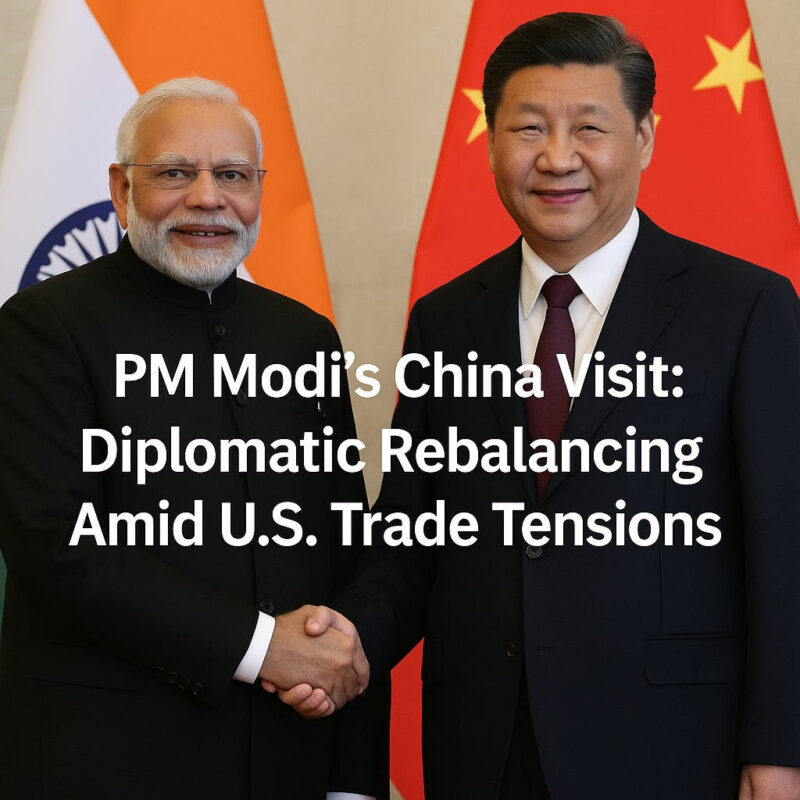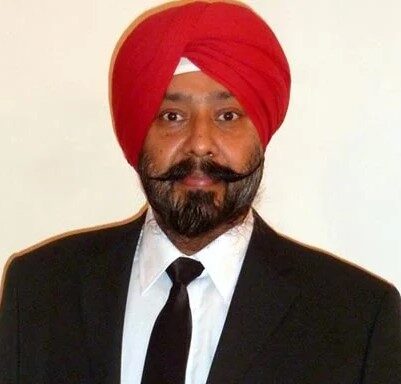 Indian Prime Minister Narendra Modi is preparing for a landmark diplomatic tour that will take him to China for the first time since 2019. His participation in the Shanghai Cooperation Organisation (SCO) summit in Tianjin, scheduled from August 31 to September 1, 2025, marks a significant development in Asia-Pacific diplomacy. This high-stakes visit comes against the backdrop of deteriorating India-U.S. trade ties, adding a layer of strategic depth to India’s evolving foreign policy.
Indian Prime Minister Narendra Modi is preparing for a landmark diplomatic tour that will take him to China for the first time since 2019. His participation in the Shanghai Cooperation Organisation (SCO) summit in Tianjin, scheduled from August 31 to September 1, 2025, marks a significant development in Asia-Pacific diplomacy. This high-stakes visit comes against the backdrop of deteriorating India-U.S. trade ties, adding a layer of strategic depth to India’s evolving foreign policy.
Before heading to China, Modi will first stop in Japan on August 30 for the annual India-Japan Summit with Prime Minister Fumio Kishida. The two-nation tour reflects India’s continued commitment to strategic autonomy and signals its intent to remain engaged with multiple power centres across the Indo-Pacific.
Healing a Fractured Relationship
Modi’s visit to China represents a significant step forward in repairing the strained India-China relationship, particularly after the 2020 Galwan Valley clash. A diplomatic breakthrough in October 2024 set the tone for renewed engagement, as both countries agreed to resume patrols at long-disputed points like Depsang and Demchok.
In the months since that agreement, a series of confidence-building measures have been implemented. India reinstated the Kailash Mansarovar Yatra, resumed the issuance of tourist visas to Chinese nationals, and began working toward re-establishing direct air connectivity. High-level visits to China by India’s defence and foreign affairs leadership have also helped pave the way for this new phase of engagement.
Modi’s previous interaction with President Xi Jinping during the BRICS summit in Russia in 2024 laid the foundation for further dialogue, which this upcoming meeting in Tianjin is expected to deepen.
U.S.-India Trade Relations in Freefall
While India’s relations with China show signs of improvement, its economic ties with the United States have sharply deteriorated. Under President Donald Trump’s administration, the U.S. has imposed harsh tariffs on Indian exports, escalating an already tense trade relationship. Beginning with a 25% tariff on August 1, 2025, the rate was doubled just days later to 50%, effective from August 27.
These punitive measures were prompted by India’s ongoing imports of discounted Russian oil, which Washington claims undermines its efforts to isolate Moscow over the Ukraine conflict. The Trump administration has also openly criticised India as being an uncooperative trade partner and warned of further retaliatory actions.
India, in response, has called the tariffs unjustified and discriminatory, accusing the U.S. of hypocrisy while Western allies continue their own energy trade with Russia. The Indian government has made it clear that it will take all necessary steps to protect national economic interests.
In a further escalation, President Trump recently announced a 100% tariff on semiconductor chips that are not manufactured or even part-assembled in the United States. Exemptions will only apply to companies committed to building domestic fabrication plants, a move that is seen as a bid to coerce global tech firms into reshoring their production lines to American soil.
Strategic Messaging Through Diplomacy
In this turbulent climate, PM Modi’s diplomatic engagement with China takes on added significance. It sends a clear message that India is willing to pursue independent channels of cooperation—even with countries it has had long-standing tensions with—if its national interests so demand.
Strategic Hedging
India’s warming engagement with China and its active participation in forums like the SCO and BRICS is part of a broader strategy to hedge against over-dependence on any single global power. By building bridges with Beijing and Moscow, India enhances its room for manoeuvre while demonstrating that it has viable alternatives to traditional Western alliances.
Embracing Multipolarity
The SCO summit offers a platform for India to position itself within alternative global frameworks. The presence of leaders like Xi Jinping and Vladimir Putin underscores the importance of non-Western multilateral engagement. As India prepares to chair BRICS in 2026, it seeks to shape the direction of these alliances in a way that aligns with its vision of multipolarity.
Managing Domestic Optics
Domestically, PM Modi cannot afford to appear submissive to foreign pressure—especially from the United States. Any perception of capitulation could damage his political standing. While India may eventually adjust its trade and energy policies in practical terms, it is unlikely to do so in a way that signals weakness. The China visit allows Modi to project strength and diplomatic agility at home and abroad.
Roadblocks in the India-China Reset
Despite these forward-looking moves, several long-standing challenges in India-China relations remain unresolved. Chief among them is the ongoing ambiguity and disagreement over the Line of Actual Control, which continues to be a flashpoint for military tensions.
Strategic rivalry in the Indo-Pacific region persists, with both nations seeking to assert their influence. China’s close and deepening ties with Pakistan also serve as a major irritant in bilateral relations. Perhaps most importantly, a deeply ingrained trust deficit continues to shadow every engagement, making sustained normalisation a difficult task.
These issues are unlikely to be resolved in a single summit. However, continued engagement can reduce volatility and establish mechanisms to manage disputes more effectively.
A Pivotal Summit with Broad Stakes
The upcoming SCO summit in Tianjin is expected to be the largest in the organisation’s history, with participation from more than 20 national leaders and representatives of 10 international bodies. Discussions are set to focus on regional security, counterterrorism cooperation, and a roadmap for SCO development through 2035.
India’s prominent role in this summit will reaffirm its status as a key voice in shaping regional and global conversations outside the Western-led alliance system. By strengthening its involvement in such multilateral frameworks, India reinforces its identity as a sovereign player in a multipolar world.
Looking Ahead: Navigating Complexity with Confidence
PM Modi’s parallel visits to Japan and China illustrate the maturity and complexity of India’s foreign policy in a rapidly changing geopolitical landscape. As trade tensions with the U.S. escalate and global alliances are reshaped, India’s ability to maintain strategic autonomy is being put to the test.
By reaching out to Beijing without abandoning Washington or Tokyo, New Delhi is signalling its intent to walk a diplomatic tightrope with clarity and conviction. The success of these engagements will not only influence India’s immediate economic and geopolitical standing but will also shape the trajectory of its Indo-Pacific strategy for years to come.
Hindi-Chini Buy-Buy
While the Panchsheel principles still stand intact—at least in theory—the Nehru–Chou En Lai era of Hindi-Chini Bhai-Bhai may not be resurrected any time soon. But Hindi-Chini Buy-Buy is very much an attainable reality. Economic pragmatism and mutual benefit could drive a new chapter, even if lingering mistrust tempers overt warmth.
While scepticism at home and abroad will persist, a steady, measured approach can transform a fraught rivalry into a structured coexistence—one where engagement replaces estrangement. This could pave the way for two ancient civilisations, now modern giants, to jointly shape an Asian century that the world will have to reckon with.
 Author Credentials:
Author Credentials:
Karan Bir Singh Sidhu is a retired Indian Administrative Service (IAS) officer and former Special Chief Secretary, Punjab. He writes at the intersection of geopolitics, U.S. tariff policy, and international trade imperatives, with a particular interest in India’s strategic recalibration with China after a prolonged period of diplomatic frost. His work examines how New Delhi navigates complex global alignments in an increasingly multipolar world.